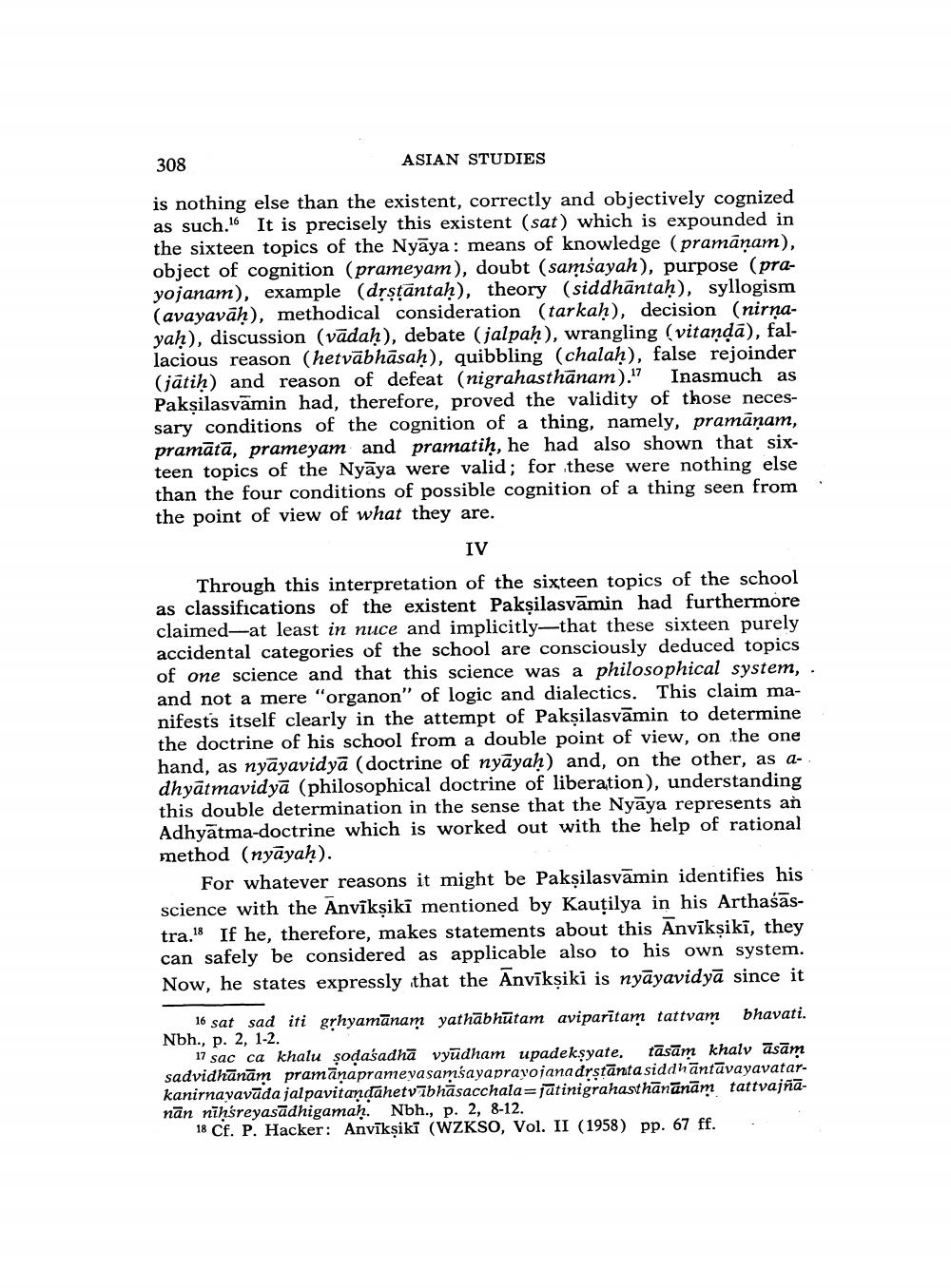________________
308
ASIAN STUDIES
is nothing else than the existent, correctly and objectively cognized as such.16 It is precisely this existent (sat) which is expounded in the sixteen topics of the Nyāya: means of knowledge (pramāņam), object of cognition (prameyam), doubt (samsayah), purpose (prayojanam), example (dņstāntaḥ), theory (siddhāntah), syllogism (avayavāḥ), methodical consideration (tarkah), decision (nirņayah), discussion (vādah), debate (jalpaḥ), wrangling (vitandā), fallacious reason (hetvābhāsaḥ), quibbling (chalah), false rejoinder (jātih) and reason of defeat (nigrahasthānam). Inasmuch as Paksilasvāmin had, therefore, proved the validity of those necessary conditions of the cognition of a thing, namely, pramānam, pramātā, prameyam and pramatiḥ, he had also shown that sixteen topics of the Nyāya were valid; for these were nothing else than the four conditions of possible cognition of a thing seen from the point of view of what they are.
IV
Through this interpretation of the sixteen topics of the school as classifications of the existent Paksilasvamin had furthermore claimed-at least in nuce and implicitly—that these sixteen purely accidental categories of the school are consciously deduced topics of one science and that this science was a philosophical system, and not a mere "organon" of logic and dialectics. This claim manifests itself clearly in the attempt of Paksilasvāmin to determine the doctrine of his school from a double point of view, on the one hand, as nyāyavidyā (doctrine of nyāyah) and, on the other, as adhyātmavidyā (philosophical doctrine of liberation), understanding this double determination in the sense that the Nyāya represents an Adhyatma-doctrine which is worked out with the help of rational method (nyāyaḥ).
For whatever reasons it might be Paksilasvamin identifies his science with the Anvīksiki mentioned by Kautilya in his Arthaśāstra.18 If he, therefore, makes statements about this Anvīksikī, they can safely be considered as applicable also to his own system. Now, he states expressly that the Anvīksiki is nyāyavidyā since it
16 sat sad iti gļhyamānam yathābhūtam aviparītam tattvam bhavati. Nbh., p. 2, 1-2.
17 sac ca khalu şodaśadhā vyūdham upadekşyate, tāsām khalv āsām sadvidhānām pramānapramevasamsayapravojanadrstānta siddhāntāvayavatarkanirnavavada jalpavitandahetvibhāsacchala=jūtinigrahasthānānām tattvajñanān niņśreyasādhigamah. Nbh., p. 2, 8-12.
18 Cf. P. Hacker: Anvīkșikī (WZKSO, Vol. II (1958) pp. 67 ff.




